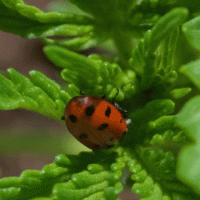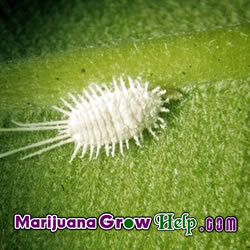Clash of the Bugs: A New Way to Fight Fire with Fire

Bugs: Friends or Foe?
If you’ve been growing long enough to know what you’re doing, then chances are good that you’ve had to deal with an infestation of bugs at some point or another.
Perhaps the names spider mites, aphids, white flies or mealy bugs ring a bell with you. If so, you know that they are your worst nightmare and stopping an infestation the moment it tries to begin is a red alert priority.
You may also be aware that using noxious chemicals on your crop in a bid to remove the pestilent plague can have undesired consequences, not limited to plant death and nasty tasting bud. Alternatively, you could be an organic puritan who wants your harvest to be au natural.
In any case, you don’t want to use chemical pesticides. Huzzah! Break out the bong and celebrate, because Mother Nature has endowed her dedicated organic growers with an arsenal of plant-friendly weaponry against these bugs of mass destruction.
The first contender is a heavyweight champion, with a record for taking down aphids and spider mites with ease and efficiency. Endowed with a ravenous appetite for virtually all your invading pests, the ladybug is an efficient little carnivore and a lovely addition to any garden.
Up next are the sleek, the deadly (to bugs, anyway) and the awe-inspiring praying mantis. Hungry for aphids, gnats, leaf hoppers, caterpillars, moths and many other little creepy crawly threats to your bud, a mantis or two can clean up most small grow spaces.
Larger grows will need more bugs, but praying mantis can live 4 – 6 months and offer a spectacular return on your investment in quality pest control. A single mantis egg will usually hatch 150 – 200 mantids, and they’re great in your flower garden too.
Both praying mantis and ladybugs can be found available online, practically year-round.
There are non-bug options available to the bug-shy as well, including neem oil for deterring aphids, spider mites and cucumber beetles, among others. Neem oil is a natural pesticide that is derived from the seeds of the Neem tree from India, but it’s best when used as a preventative measure against pests.
To use neem oil on your plants, mix 2 tablespoons of cold-pressed neem oil and 1 tablespoon of dish soap into 3 cups of warm water, then pour the mixture into your spray bottle. As long as the mixture is warm, you should be able to work with it easily, just shake the bottle to remix it if anything becomes separated or run it under hot water, and apply to your crop as needed.
You can also use a topical mist made with 2 cloves of garlic and one onion finely chopped and pureed together. Blend the garlic and onion with 2 cups of water in a blender, and then strain the mix through a fine mesh screen or a piece of cheese cloth to remove the pulp.
Put the onion + garlic water in your spray bottle and soak the plants thoroughly on the tops and bottoms of their leaves to drive off most pests.
Containing a pest outbreak quickly and effectively is important not just because of the immediate damage the little buggers cause, but also because of their capacity to spread diseases. Insects like white flies and leaf hoppers can carry diseases and spread pathogens from plant to plant, causing massive damage even if they aren’t reproducing en masse.





No comments yet.